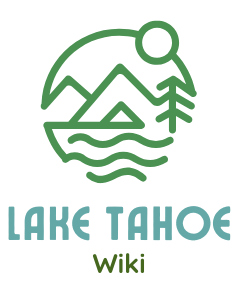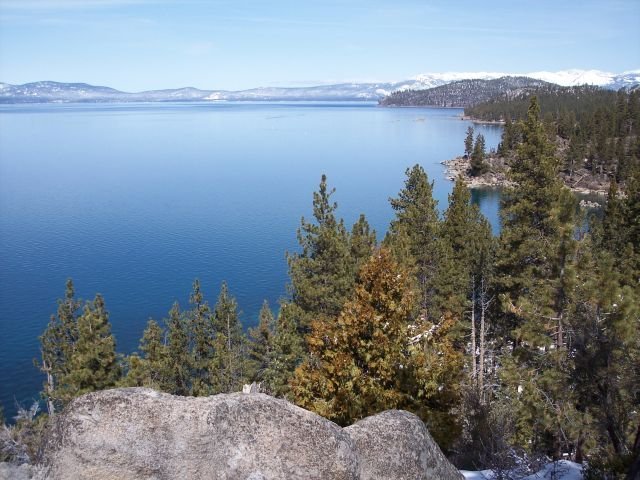Eagle Falls in Lake Tahoe is a popular hiking destination known for its stunning waterfall views and access to the pristine Desolation Wilderness. Located near Emerald Bay State Park, this trail offers hikers a chance to experience the natural beauty of the Sierra Nevada mountains. With options for both short and long hikes, Eagle Falls attracts visitors of all skill levels who seek to immerse themselves in the breathtaking landscapes of Lake Tahoe.
What Makes Eagle Falls in Lake Tahoe a Must-Visit Destination?

Eagle Falls in Lake Tahoe stands out as a premier hiking destination for several reasons:
- Scenic beauty: The trail offers spectacular views of cascading waterfalls, pristine alpine lakes, and rugged mountain landscapes.
- Accessibility: Located near popular Lake Tahoe attractions, Eagle Falls is easily reachable for most visitors.
- Variety of hiking options: From short family-friendly walks to challenging backcountry treks, there’s a trail for every skill level.
- Gateway to Desolation Wilderness: The trail serves as an entry point to one of California’s most beautiful wilderness areas.
What Are the Trail Details for Eagle Falls Hiking?

The Eagle Falls trail offers various options for hikers:
- Distance:
- Eagle Lake route: 1 mile one way (2-4 miles round trip)
-
Extended hikes to Velma, Dicks, and Fontanillis Lakes: 4.3 to 5.3 miles one way
-
Elevation Gain:
- Eagle Lake segment: Approximately 400 feet
-
Steeper gains for longer hikes into Desolation Wilderness
-
Trail Difficulty: Moderate to difficult, with rocky terrain and steep inclines
-
Estimated Hiking Time:
- Eagle Lake route: 57 minutes to 1 hour 20 minutes round trip
- Longer hikes: Variable, depending on destination and pace
How Does the Waterfall’s Flow Change Throughout the Year?
While specific data on Eagle Falls’ height and seasonal flow variations are not provided in the available sources, we can infer some general patterns:
- Peak Flow: Likely occurs during spring and early summer due to snowmelt
- Best Viewing Times: May through October, when water flow is typically higher
- Seasonal Variations: Flow may decrease in late summer and fall, depending on annual precipitation
What Accessibility Features Are Available at Eagle Falls?
Eagle Falls offers some basic amenities for visitors:
- Parking:
- Small parking lot at Eagle Falls Picnic Area ($5 fee as of 2018)
-
Additional street parking along the highway
-
Trail Accessibility:
- Not suitable for those with mobility challenges due to steep, rocky terrain
-
No specific accessibility features mentioned for individuals with disabilities
-
Amenities:
- Self-serve permit area at the trailhead for day and overnight hikers
- Limited facilities; nearby Emerald Bay State Park offers additional attractions
Where Are the Best Scenic Viewpoints Along the Trail?
The Eagle Falls trail boasts several picturesque spots for nature enthusiasts and photographers:
- Initial waterfall view: Approximately half-mile into the hike
- Granite rock area: Before reaching Eagle Lake, offering panoramic mountain views
- Eagle Lake: The trail’s end provides stunning vistas, especially near fallen rocks by the lake
While exact coordinates aren’t provided, key landmarks include:
– Eagle Falls Picnic Area
– Bridge over Eagle Falls
– Granite rock area preceding Eagle Lake
What Should Hikers Prepare for When Visiting Eagle Falls?
To ensure a safe and enjoyable experience at Eagle Falls, hikers should consider the following:
-
Proper Footwear: Sturdy hiking boots with good traction are essential due to rocky and potentially slippery terrain.
-
Hiking Gear:
- Trekking poles or hiking sticks for stability
- Backpack with essentials (water, snacks, first-aid kit)
-
Layered clothing for changing weather conditions
-
Permits:
- Day hikers: Self-issued permit required (available at trailhead)
-
Overnight hikers: Wilderness permit required (obtain in advance)
-
Timing:
- Arrive early to secure parking, especially during peak season
-
Allow sufficient time for the hike based on your chosen route
-
Physical Preparation:
- Be prepared for steep inclines and high elevation
-
Acclimate to the altitude before attempting strenuous hikes
-
Leave No Trace:
- Pack out all trash
- Stay on designated trails to protect the fragile ecosystem
How Does Eagle Falls Compare to Other Lake Tahoe Hiking Trails?
Eagle Falls stands out among Lake Tahoe hiking trails for several reasons:
| Feature | Eagle Falls | Other Tahoe Trails |
|---|---|---|
| Accessibility | Easy access from highway | Varies, some require longer drives |
| Scenery | Waterfalls, lakes, and mountain views | Diverse, but may not offer all in one trail |
| Trail Options | Short and long hikes available | Often more limited in scope |
| Wilderness Access | Gateway to Desolation Wilderness | Not all trails offer wilderness access |
While many Lake Tahoe trails offer beautiful scenery, Eagle Falls provides a unique combination of accessibility, diverse landscapes, and options for both casual and serious hikers.
What Wildlife Might Hikers Encounter at Eagle Falls?
The Eagle Falls area, part of the diverse Sierra Nevada ecosystem, is home to various wildlife species:
- Mammals: Black bears, mule deer, squirrels, chipmunks
- Birds: Mountain chickadees, Steller’s jays, woodpeckers
- Reptiles and Amphibians: Western fence lizards, garter snakes
Hikers should observe wildlife from a safe distance and never feed animals to maintain the natural ecosystem balance.
How Can Visitors Minimize Their Environmental Impact?
To preserve the natural beauty of Eagle Falls and Desolation Wilderness, visitors should practice responsible tourism:
- Stay on designated trails to prevent erosion and protect plant life
- Pack out all trash, including biodegradable items
- Use established campsites if backpacking
- Respect wildlife by observing from a distance
- Follow fire regulations and use established fire rings where permitted
- Use biodegradable soap and dispose of waste water away from water sources
- Obtain necessary permits and follow all park regulations
By following these guidelines, visitors can help ensure that Eagle Falls remains a pristine natural area for future generations to enjoy.
Eagle Falls in Lake Tahoe offers a perfect blend of natural beauty, hiking challenges, and accessibility. Whether you’re seeking a short family hike or a gateway to backcountry adventures, this trail provides an unforgettable experience in one of California’s most scenic regions. Remember to plan ahead, respect the environment, and immerse yourself in the stunning landscapes that make Eagle Falls a true Lake Tahoe gem.

